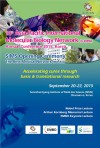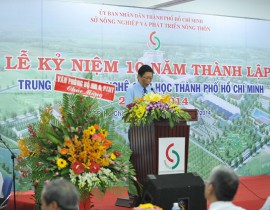Artificial Cell Demonstrates Dynamic Gene Regulation (10-12-2014)

The assembly of artificial cells capable of executing synthetic DNA programs has been an important goal for basic research and biotechnology. In a step toward reaching this goal, investigators at the Weizmann Institute of Science (Rehovot, Israel) assembled artificial cells based on two-dimensional DNA compartments fabricated in silicon. Each compartment contained strands of DNA together with an extract of E. coli bacteria lacking its own DNA. Metabolism was maintained by continuous diffusion of nutrients and products through a thin capillary, connecting protein synthesis in the DNA compartments with the environment.
These unique biochips were based on a new molecule, that the investigators called "Daisy," which formed a photolitographic monolayer on glass. Using photolithography, they were able to immobilize any biomolecule on Daisy-coated surfaces with controlled density at sub-micron resolution. Specifically, they developed a methodology for immobilizing whole genes, thousands of base-pairs long, at local gene density similar to that in a bacterium cell. This DNA/surface interface provided means to investigate gene expression under conditions of crowding and confinement. Additionally, they demonstrated a simple two-stage gene circuit and the integration of such systems in microfluidic devices.
A paper published in the August 15, 2014, issue of the journal Science described the programming of protein expression cycles, autoregulated protein levels, and a signaling expression gradient in an array of interconnected compartments at the scale of an embryo. Gene expression in the DNA compartment revealed a rich, dynamic system that was controlled by geometry, offering a means for studying biological networks outside a living cell.
Senior author Dr. Roy Bar-Ziv, professor of materials and interfaces at the Weizmann Institute of Science, said, “The idea to mimic a living cell is a longstanding dream shared by many. If we can build a primitive model of something so complex, we can possibly understand the dynamics of protein synthesis better. Our on-chip "genome" is in the form of a DNA brush with thousands of DNA strands attached at one of their ends to the surface like the hairs of a toothbrush. In principle, we can encode thousands of different genes. In practice, we demonstrated simple gene networks that are composed with just two genes hooked up to each other to create feedback. We will never be able to reproduce a complex cell that has evolved for millions of years. But we can design a primitive system that mimics the dynamics of all cells, synthesizing the appropriate enzymes and proteins to digest the food source and shutting down those not needed anymore.”
“Our major achievement is having localization of protein synthesis on the surface, and turning on and off genes dynamically,” said Dr. Bar-Ziv. “That is important, because in our own cells there is always a dynamic regulation going on between protein synthesis and gene shut-off. Without a mechanism to regulate that in artificial cells, you cannot have dynamic behavior such as oscillation. By embedding the appropriate genes, we were able to demonstrate for the first time dynamic modes approaching synthesis.”
Newer articles
Older articles
-
 The 13th Asian Congress on Biotechnology (ACB 2017)...
The 13th Asian Congress on Biotechnology (ACB 2017)...
- 26/01/2017 04:49:00 AM
-
 Welcome to the 19th A-IMBN Annual Conference 2016
Welcome to the 19th A-IMBN Annual Conference 2016
- 21/04/2016 01:29:00 PM
-
 Groundbreaking Ceremony for Components of the HCMBiotech...
Groundbreaking Ceremony for Components of the HCMBiotech...
- 06/11/2015 10:51:00 AM
-
 Artificial Cell Demonstrates Dynamic Gene Regulation...
Artificial Cell Demonstrates Dynamic Gene Regulation...
- 06/11/2015 10:23:00 AM
-
 Low-Cost Sophisticated Device Diagnoses HIV (10-12-2014)
Low-Cost Sophisticated Device Diagnoses HIV (10-12-2014)
- 06/11/2015 10:20:00 AM




















